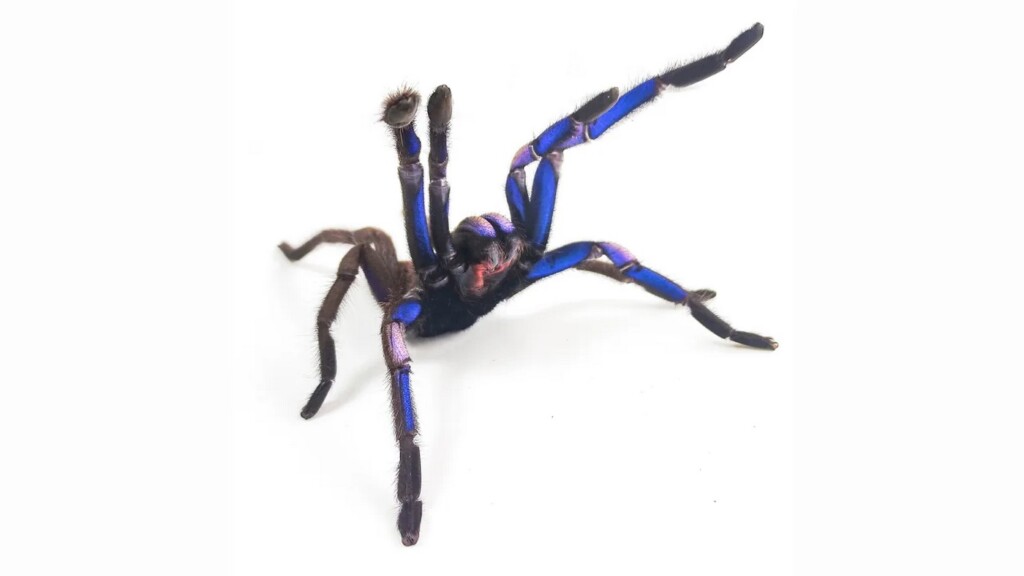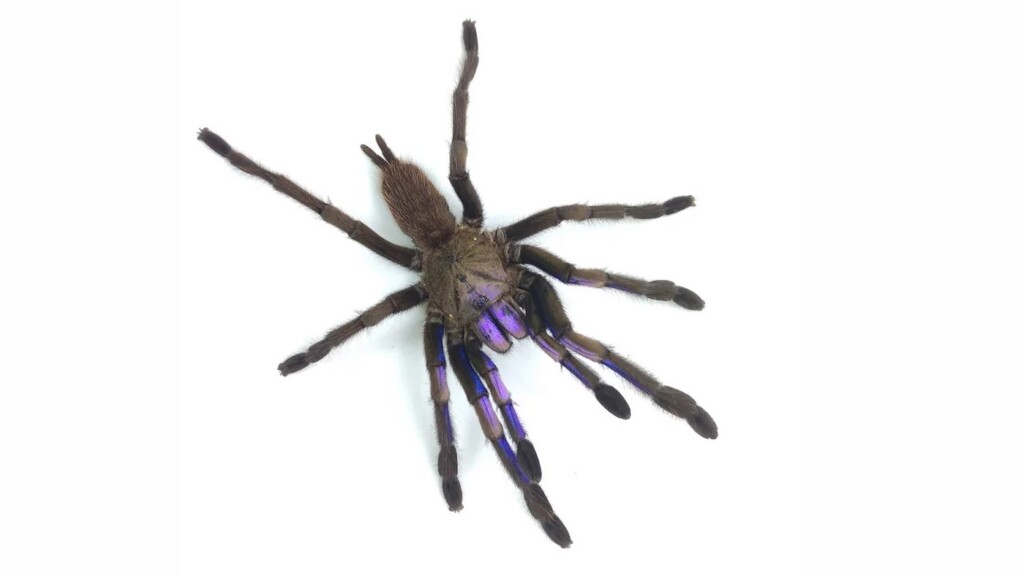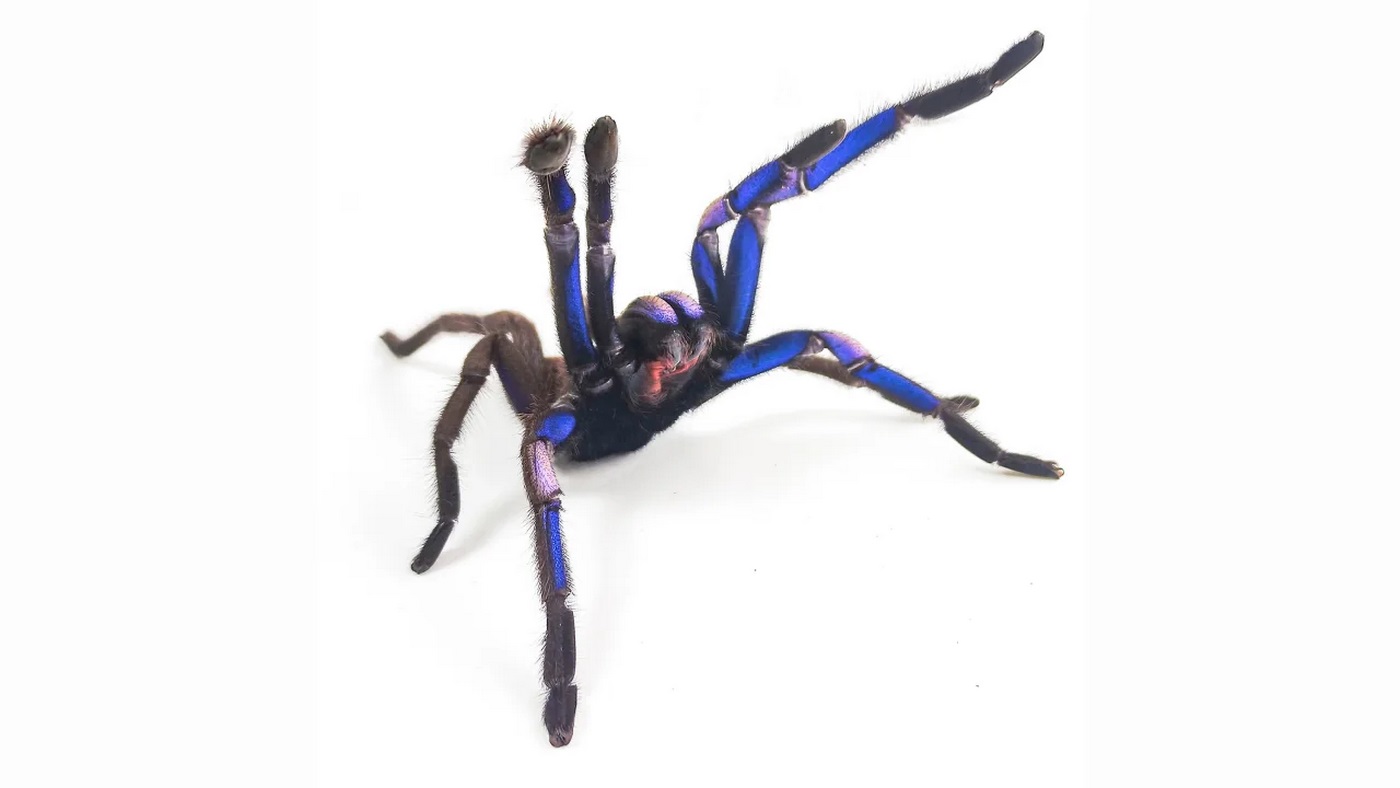
Even arachnophobes may have to tip their hat to this beast, who seems to bend all the rules of his race by sporting electric blue hair gel.
The story of its discovery is a fascinating one, but the exercise of plumbing the depths of a Thailand mangrove forest wasn’t merely scientific in nature, but humanitarian as well.
With the excitement in national news which the discovery of the tarantula drummed up, the team behind it, led by scientist Narin Chomphuphuang and joined by popular Thai YouTube explorer JoCho Sippawat, decided to auction off the rights to give the iridescent spider its scientific name in order to raise money and awareness for JoCho Sippawat’s people.
Sippawat is from the Lahu indigenous group of Northern Thailand and Southern China. While recognized by the latter, in Thailand their existence is denied, and they are subject to mistreatment by the government according to the International Working Group for Indigenous Affairs.
Last year, GNN reported that Sippawat had discovered a tarantula living in the hollow of a bamboo tree—not just a new species but a new genus, as none of the 1,000-strong members of the tarantula family has ever been documented living inside bamboo.
Chilobrachys natanicharum is now the spider’s official name, after two Thai businessmen who bid the highest for the honor.
C. natanicharum has a blue coloration in patches all around the front of its body, which is extremely curious.
MORE EXCITING NEW SPECIES: Tiny New Species of Chocolate Frog is Discovered After Scientists Follow its Unique ‘Beep’ Sound
“The enchanting phenomenon of blue coloration in animals arises from the fact that blue is one of the rarest colors found in nature, and it is a structural color that is produced by the arrangement of biological photonic nanostructures, rather than pigments,” Mr. Chomphuphuang writes in the introduction of a study describing the species.
“C. natanicharum has unique coloration due to the presence of two types of hair: metallic-blue and violet ones. The color depends on the ratio of the two hair colors,” they wrote in the journal ZooKeys.

Chameleons produce vivid and fascinating colors via pigments, but the tarantula’s hairs absorb some light and reflect the rest—a complex interplay that makes blue animals especially rare.
“To appear blue, an object needs to absorb very small amounts of energy while reflecting high-energy blue light,” which is challenging, Chomphuphuang told CNN.
While their study is about getting into the nitty-gritty details of the spider and proving exactly why it belongs to which genus and what makes it different from other species, the study lacks any indication of why an ambush hunter that typically relies on camouflage and hiding would sport iridescent blue as its camouflage in a jungle environment.
SIPPAWAT’S OTHER SPIDER: New Species of Tarantula That Lives in Bamboo is Discovered by Wildlife YouTuber
Bright colors are utilized in many species as a mating tool (think male peacocks compared to female ones), but the brightest tarantulas observed were juvenile males and females.
Typically, tarantulas are arboreal or terrestrial, but this one was found by the team in the hollow of a mangrove tree in a mangrove swamp at low tide, potentially indicating an aquatic aspect to its life.
Based on the conservation status of southern Thailand’s mangroves, the electric blue tarantula is likely one of the rarest of its kind.
SHARE This Stunning Hunter All Bad In Blue With Your Friends…





















Blue, blue, electric blue? C’mon this beauty deserves to be called the David Bowie spider!